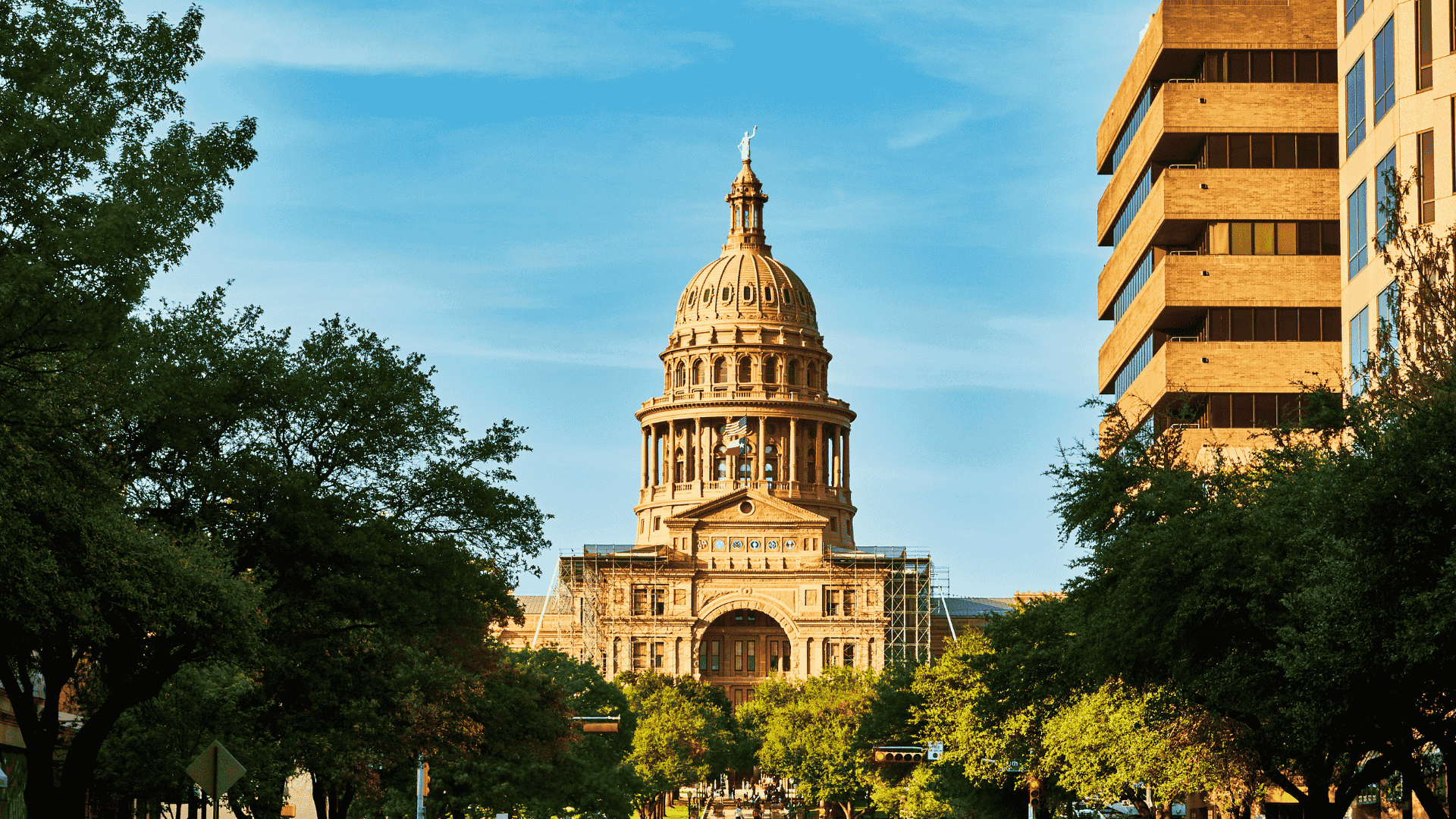B1/B2 to F1
The United States offers a variety of nonimmigrant entry statuses tailored for studying, working, and tourism. Among these, obtaining tourist visas and using the Electronic System for Travel Authorization (ESTA) are relatively simpler processes. Many individuals arrive in the U.S. with a B1/B2 visa or through ESTA for tourism or short-term educational pursuits. Often, these visitors become enamored with the U.S. culture and environment, leading them to contemplate a longer or permanent stay.
However, the limitation of tourist visas, which are valid for only six months, necessitates a change of status for those wishing to extend their stay legally. Day1CPT.org offers an essential guide for navigating this transition. Our resources include detailed precautions, a comprehensive checklist of necessary documents, and step-by-step guidance for a successful change of status. Opting for Day 1 CPT not only widens your educational opportunities but also opens doors to lawful employment in the U.S., making it a strategic choice for those looking to change their nonimmigrant status.
Book a Free Consultation with us!
B1/B2 Visa
The B1/B2 visitor visa is designated for individuals planning a temporary visit to the United States for business (B1) or tourism, medical treatment (B2), or similar purposes. Specifically, the B1 visa caters to individuals engaging in business activities such as consulting with business associates, attending scientific, educational, professional, or business conventions/conferences, engaging in real estate transactions, or negotiating contracts. On the other hand, the B2 visa is intended for those traveling for leisure, including tourism, visiting friends or relatives, medical treatments, and participation in social, fraternal, or service activities. Typically, the B1 and B2 visas are issued as a combined visa, known as the B1/B2 visa.
F1 Visa
The F1 visa is granted to international students enrolled in accredited educational institutions across the U.S., covering all levels of study. This visa allows students to remain in the U.S. for the entirety of their academic program. Additionally, F1 students may qualify for work opportunities through authorizations like OPT (Optional Practical Training) and CPT (Curricular Practical Training), which are designed to provide practical experience related to their field of study.
Thus, obtaining an F1 visa can significantly expand your educational and professional prospects in the United States.
Obtaining a B2 visa to enter the U.S. is often straightforward. However, this visa type imposes strict limitations, primarily confining holders to tourism-related activities. Intentions might change once visitors are in the U.S., leading some to seek deeper engagement through study or work. Thankfully, U.S. Citizenship and Immigration Services (USCIS) acknowledges that visitors' intentions can evolve. Provided you were honest about your original intentions at your visa interview and upon entry, changing your plans is not considered fraudulent. This flexibility allows for the possibility of applying for a change in visa status, should your goals in the U.S. develop.
Requirements for Changing B1B2 Status
Eligibility Criteria for Changing Visa Status:
- Lawful Entry: You must have entered the U.S. legally on a nonimmigrant visa.
- Status Maintenance: Your current nonimmigrant status must be valid, and you must have adhered to all its conditions without any violations.
- Employment Restrictions: Holders of a B2 visa must not engage in any form of employment. While short-term study is permitted, it cannot count towards any academic credit.
- Legal Compliance: You must have a clean legal record, with no criminal activities or engagements that would make you ineligible for a change of status.
F1 Visa: A Gateway to Educational and Professional Growth
The F1 student visa is tailored for non-immigrants wishing to pursue academic studies in the U.S., offering several benefits over the B1/B2 visa:
Requirements for Changing B1B2 Status
Eligibility Criteria for Changing Visa Status:
- Lawful Entry: You must have entered the U.S. legally on a nonimmigrant visa.
- Status Maintenance: Your current nonimmigrant status must be valid, and you must have adhered to all its conditions without any violations.
- Employment Restrictions: Holders of a B2 visa must not engage in any form of employment. While short-term study is permitted, it cannot count toward any academic credit.
- Legal Compliance: You must have a clean legal record, with no criminal activities or engagements that would make you ineligible for a change of status.
Educational and Professional Opportunities
F1 visa holders can enroll in full-time courses at accredited U.S. institutions, opening doors to advanced education and specific career paths.
Extended Stay and Re-entry Flexibility
F1 visas typically cover the duration of the academic program plus any authorized training, often allowing for a longer U.S. stay than a tourist visa.
Family Inclusion
F1 visa holders can have their family join them on F2 visas, which allow dependents to stay for the duration of the academic program. F2 holders can also engage in recreational or vocational studies.
4 Steps to change your status from B1/B2 to F1
Step 1: Apply for a school and get admission
To qualify for an F-1 visa, you must first gain acceptance to an institution certified by the Student and Exchange Visitor Program (SEVP). Additionally, you need to demonstrate strong ties to your home country, which support your intent to return home after your studies are complete.
Step 2: Receive your I20
After being accepted by an SEVP-certified school, you should request an I-20 form from your Designated School Official (DSO). Remember, domestic students do not need an I-20, so be sure to specifically request this document if you're an international student. Once you have your I-20, which will note "change of status" in the “Issue Reason” section provided by the DSO, you must pay the I-901 SEVIS fee to proceed with your visa application process.
Step 3: File your I-539 form & Supported Documents
Here are the basic required documents for a visa application, though additional documents may be needed depending on your specific circumstances:
- Financial Evidence: You must show proof of sufficient funds to cover tuition and living expenses for the duration of your stay.
- Form I-20: This document is issued by the SEVP-certified institution you plan to attend.
- Passport: Your passport should be valid for at least six months beyond your planned period of stay in the U.S.
- Photographs: You will need passport-style photos that meet the specifications for a U.S. visa application.
- Academic Records: Provide documents that verify your educational qualifications and background.
- Receipt for SEVIS Fee: You must pay the SEVIS fee prior to submitting Form I-539 for your application.
Step 4: Wait for USCIS decision and start the class
Here's how the process unfolds after submitting your change of status application to USCIS:
- Approval: If approved, you can enroll in your program and start your studies.
- Request for Evidence (RFE): If USCIS needs more information, they'll issue an RFE. You must respond with the required information.
- Notice of Intent to Deny (NOID): If USCIS considers denying your application, they will send a NOID. You should respond promptly to address any concerns.
- Denial: If denied, you can consider other legal options or reapply if circumstances change.
Upon approval, enroll and pay tuition. Proceed to enroll in your chosen program, pay the tuition fees, and begin attending classes as scheduled.
Time & Cost

When changing your status from B-1/B-2 to F-1 in the United States, timing and adherence to USCIS guidelines are crucial to avoid suspicions about your initial travel intentions. For a successful change of status application, avoid applying within 30 days of entering the U.S. or when your visa is about to expire. Instead, it's safest to apply after you've been in the U.S. for over 90 days but while your B visa still has significant validity left.
If your application coincides too closely with your program start date and USCIS has not yet made a decision, coordinate with your school's Designated School Official (DSO) to possibly defer your start date. During this process, maintaining legal status is essential; if your B status is set to expire more than 30 days before your program begins, you must file for an extension using Form I-539 and pay the required fee to ensure continuous legality until your new program starts.
Processing Time
- Regular Processing Time: Regular processing times for a change of status can vary significantly, typically ranging from 3 to 8 months.
- Premium Process: For those needing faster resolution, premium processing is available by submitting Form I-907 along with Form I-539. This service requires an additional fee of $1,965 and aims to reduce the processing time to just 30 days, providing a quicker path to adjusting your status.
Fees and Cost
- School Application Fee: $50 - $200 (Application Fee can be waived if you applied for a cooperated school with dat1cpt.org)
- I -901 SEVIS Fee: $350
- I-539 Filing Fee: $420 (online) / $470 (by mail)
- Premium Processing (optional): $1965
- Legal Service Fee (optional): $150 -$400/hour
- Tuition: Vary by school
Questionable Timing and Intent and Concerns about Intent of Study
Both these problems relate to the timing and the perceived intent behind applying for a visa change. The solutions for these problems involve:
- Crafting an Effective Explanation Letter: This helps clarify the intent and timing of your visa change request to address USCIS concerns.
- Applying for a B2 Prospective Student Visa: This is a preemptive measure for those who know they want to study before they enter the U.S. and can help avoid questions about their initial intent.
Gap between B2 and F1 Status
This specific issue is addressed by two solutions:
- Leaving and Re-entering US: This solution resets the visa status by allowing entry on the correct visa for the intended purpose.
- Filing for an Extension of B2 Status: This covers the legal gap if the F1 status is approved too early before the program start.
How Much is the Cost for Changing Status from B2 to F1?
- I-539 (Application to Change of Status) Fee: $420 (online); $470 (paper)
- SEVIS Fee: $350
- University Application Fee: $50-200
- Attorney Fee: $200-300 per hour; usually 3-8 hours depending on the case
What are the consequences if my request to change from a B2 to an F1 status is rejected after my B2 visa has expired?
If your change of status from B2 to F1 is denied and your B2 visa has already expired, you must leave the U.S. promptly—typically within 30 days. Failing to leave within this period results in what is known as 'unlawful presence,' which marks your stay as illegal. The longer you overstay, the more severe the consequences. Remaining out of status generally prevents you from rectifying your situation from within the U.S., and a prolonged overstay could significantly hinder future attempts to re-enter the country.
Should I file online or by mail?
When applying for a change of status from B2 to F1, it's generally advisable to file online to minimize errors associated with mailing. However, if you are applying along with dependents, submitting your application by mail is advantageous as it allows you to pay a single filing fee for everyone. Be aware that applying by mail can sometimes trigger a more detailed scrutiny of your intentions to immigrate.
Can I study part-time on while on B2?
While on a B2 visa, you are allowed to engage in recreational study that is not for credit towards a degree. This means you can take non-credit courses that are casual and not part of a structured curriculum leading to a certificate or degree. However, if you plan to undertake any study that will contribute towards a degree, you must change your status to an F1 or M1 visa, which are designated for full-time students.
How to choose a suitable school when trying to change from B1/B2 to F1 in the US?
When considering a change from a B2 to an F1 visa within the U.S., choosing the right educational institution is essential. Here’s a guide to help you navigate this important decision:
-
SEVP-Certified Institutions: Always ensure the school you choose is certified by the Student and Exchange Visitor Program (SEVP). This certification allows the school to issue I-20 forms, a necessary document for changing your visa status.
-
Types of Institutions:
- Traditional Higher Education Institutions: These include universities and colleges offering a variety of academic degrees. They require a significant time and effort commitment, usually involving a full-time course load.
- Day 1 CPT Universities: Ideal for those who wish to integrate work experience with their studies from the onset. These universities offer Curricular Practical Training (CPT) from the first day of classes and may have flexible enrollment periods throughout the year, accommodating urgent status changes.
- English Language Programs: While helpful for improving English skills, be cautious as transitioning from a B2 visa to an F1 via English language programs can have a higher rate of denial due to the perceived temporary nature of such studies.
-
Consider Your Academic and Career Goals: Align your choice of school with your long-term educational and professional objectives. If you aim to enter the workforce or continue in academia in the U.S., choosing a traditional institution or a Day 1 CPT university might be more beneficial.
-
Application Cycles and Deadlines: Check the application deadlines and cycles of the schools you are considering. Day 1 CPT universities often offer multiple start dates which can be beneficial if you need to adjust your status quickly.
-
Review Acceptance Rates and Support for International Students: Some institutions are more supportive of international students and have better resources to assist with the transition from B2 to F1 status. Research the school’s history with international students to gauge their experience in handling status changes.
Choosing the right school involves careful consideration of your current status, your future academic and professional plans, and the specific requirements of each type of institution. Make sure to gather all necessary information and possibly consult with an immigration expert or the school’s international student office to make an informed decision.
Can I work while change of status is pending?
While your application for a change of status is pending, you are not permitted to work or begin your studies. However, you are allowed to remain in the U.S. until a decision on your application is reached.
Are you planning to change your status from B1/B2 to F1? If yes, you can reach out to us and learn more!
✓ One-on-One Free Consultation
✓ Personalized Day 1 CPT Universities List
✓ Application Fee Wavier & Application Assistant
✓ Scholarship Opportunities
✓ Connecting to the Admission Officer to Get Pre-Approval
✓ Premium Process - Get an Offer and I-20 within 3 days [added-value service]
*Our consultants are committed to providing a seamless experience. Once you initiate a case with us, you will be assigned a specific consultant who will thoroughly understand your case, ensuring that there's no need for you to repeat information each time you call. We will not change your consultant unless you request it.
Latest Day 1 CPT News and Policies

H-1B Wage-Level Weighted Lottery Is Now Final: What the New Rule Means for FY 2027

Best Day 1 CPT Universities in Texas for STEM Students (Austin and DFW Guide 2025–2026)
-Dec-04-2025-09-30-02-3809-PM.png)
